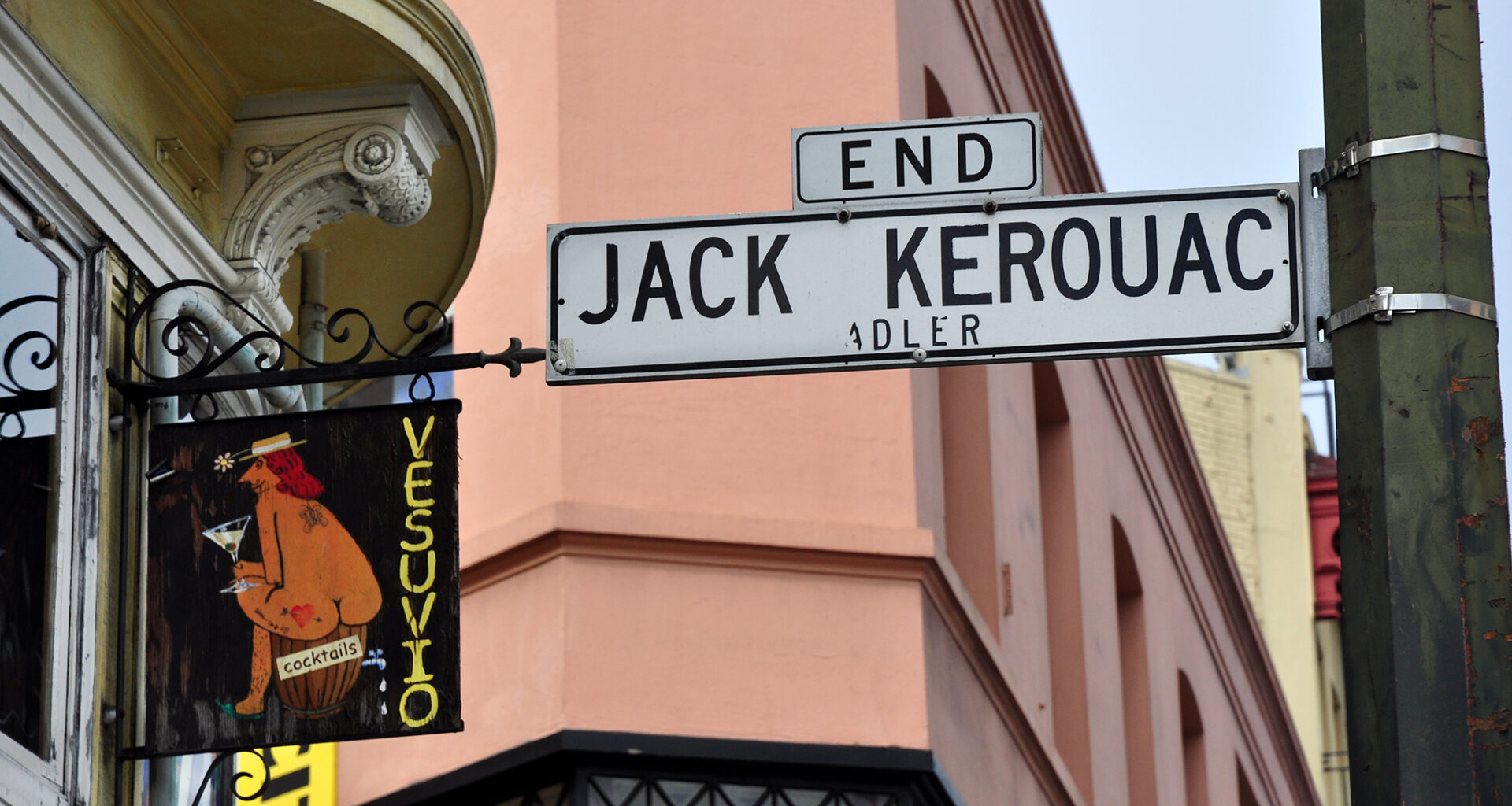Jack Kerouac Alley in North Beach was named after the legendary beat writer in 2007.
Wikimedia Commons
A lost story written and signed by legendary San Francisco writer Jack Kerouac has been found among the belongings of an infamous mafia boss who was gunned down in 1985. The two-page story, titled “The Holy, Beat, and Crazy Next Thing,” was written shortly before the publication of Kerouac’s 1957 masterpiece “On the Road.”
The story details, in Kerouac’s typical ecstatic and spontaneous style, an evening of joy and yearning in Denver with Neal Cassady, LuAnne Henderson and Allen Ginsberg, using their alter egos Dean Moriarty, Marylou and Carlo Marx. The typed story is signed by Kerouac with a green fountain pen, something he was known to do at the time.
Article continues below this ad
Tom Palumbo via WikiCommons/CC BY-SA 2.0
The story’s existence was unknown to the public until recently, as it spent many years among the belongings of the former head of the Gambino New York crime family Paul Castellano. After succeeding Carlo Gambino to become don in 1976, Castellano was shot dead in front of Sparks Steak House in Manhattan in 1985.
It’s not clear exactly how and when Castellano took ownership of the literary relic, but whispers of the existence of the story arose in 2024 when an estate sale was organized at Castellano’s former mansion.
“A friend of mine tipped us off that there was an estate sale going on that day and they had seen some ephemera in the auction,” Jerry Braunfield of online auction house Your Own Museum told SFGATE on Monday. “There were roughly 10 to 15 people attending, and we were serendipitously bidding against no one interested in the items. It happened by pure fate. It was an unexpected and fortunate opportunity.”
Article continues below this ad
The lost story was discovered at an estate sale at crime boss Paul Castellano’s former mansion.
Wikimedia Commons
After winning the auction and authenticating the manuscript, Braunfield listed the manuscript this weekend for $8,500. “It sold almost immediately,” Braunfield said.
Before it found its way into a crime boss’ private collection, the manuscript was owned by another San Francisco literary icon. “This piece originates from the collection of a noted San Francisco-based poet and friend of the Ferlinghetti circle, who received it directly from the author,” the auction house stated.
Kerouac’s fame soared in the 1950s, after “On the Road” became a literary sensation. The breathless, jazz-inflected chronicle of restless youth and the search for meaning in postwar America, written in a single, three-week burst on one 120-foot scroll of paper, cemented his status as the voice of a generation. The original scroll of “On the Road” last sold in 2001 for $2.43 million.
Article continues below this ad
The short story was written five months before the publication of “On The Road.”
Courtesy YourOwnMuseum
The Massachusetts-born writer’s life and work was long intertwined with San Francisco and the Beat movement on the West Coast. In 1952, Kerouac lived with his friend and muse Neal Cassady at a small house at 29 Russell St. on Russian Hill.
His final years, lost to alcoholism before his death at the age of 47, were also largely chronicled in San Francisco. On one evening in 1960, Kerouac arranged to visit writer Henry Miller in Big Sur. Instead of making his way down the coast, he spent the night drinking in Vesuvio, calling Miller through the night from the bar’s pay phone to apologize for choosing that little corner of San Francisco over the rest of the world. The scene was immortalized in the writer’s last great novel, “Big Sur.”
Article continues below this ad
The newly discovered story has been described as a “lost chapter” from “On the Road,” an idea perhaps backed by the title page naming the seminal work before the title, “The Holy, Beat, and Crazy Next Thing.” The story was written in April 1957, five months before the book’s release.
The brief tale describes a manic Denver evening between Kerouac and his friends, punctuated by a moment of reflection, while looking over the Rocky Mountains. “We drank until the wine was gone and the stars turned into one smeared light,” Kerouac writes. “We talked about everything and nothing, our words tumbling into the vast American night.”

